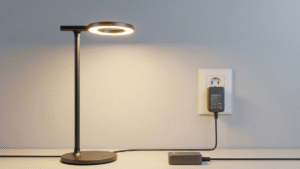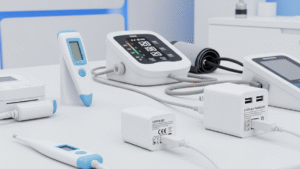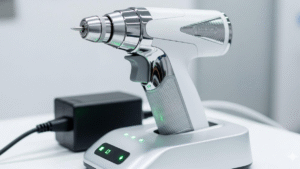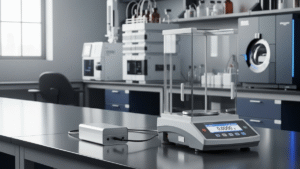Orthopedic power tools are a type of medical surgical device used to manipulate bone and related tissue during orthopedic surgery. These tools provide surgeons with power (electrical, pneumatic, or battery-powered) to perform cutting, drilling, fixation, shaping, bone resection, and bone and other hard tissue removal and shaping. Compared to manual tools, electrically powered tools can generate the required force more precisely, quickly, and consistently, saving surgical time and improving both effectiveness and safety. This is where medical power adapters come in.
During surgery, orthopedic power tools typically require a stable DC power source (e.g., 24V, 36V, 48V, etc.). Power adapters convert the hospital’s AC power (AC 100–240V) into a safe and stable DC power source, preventing voltage fluctuations that can affect the surgical process. This ensures better surgical performance and a better patient recovery. Medical power adapters must also comply with international medical safety standards such as IEC 60601-1 and feature isolation designs to prevent leakage and electromagnetic interference (EMI) from endangering patients and medical staff. To ensure the high torque and instantaneous high power output required for orthopedic tools during drilling, cutting, and grinding, medical power adapters must provide sufficient current and fast response to prevent tool stalling.
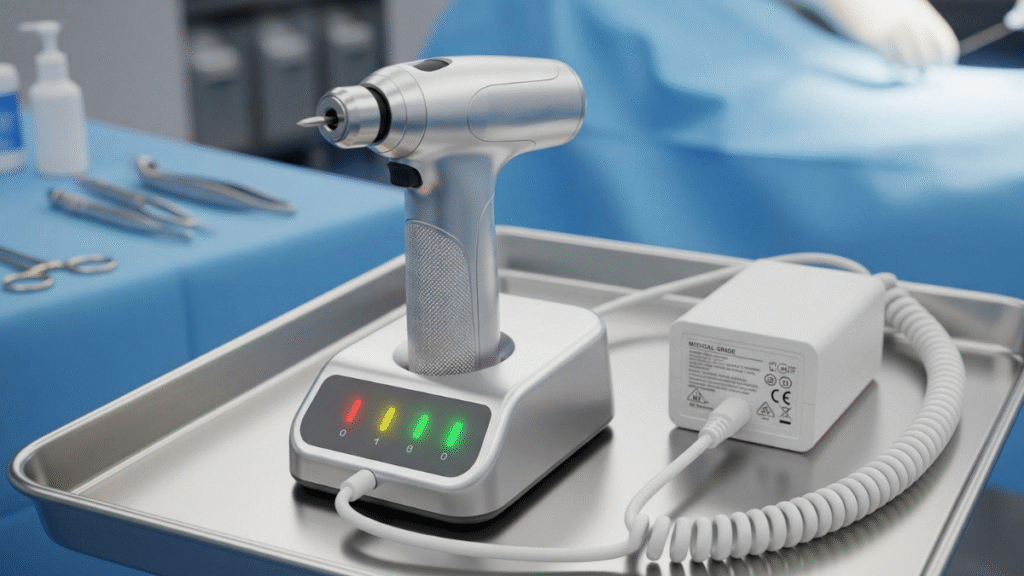
Many orthopedic power tools currently have two common power supply methods.
The first method uses a power adapter connected to a docking station. This allows doctors and nurses to quickly place and remove the tool in a sterile environment. The power adapter provides DC power, which is then distributed to the battery module via the docking station. This method is particularly suitable for high-end systems with multiple battery configurations (such as joint replacement and spinal surgery power tools), where rapid replacement of backup batteries is often required in hospital operating rooms.
The second method uses direct charging via the power adapter. This is simple, allowing the tool to be charged by simply plugging it into the power adapter. It is suitable for stand-alone devices, small orthopedic power tools, or tools that are not frequently used in hospitals.
Comparison of the Two
| Application Scenarios | Common Adapter Output Specifications | Charging Method | Typical Features | Applicable Tool Types |
|---|---|---|---|---|
| Large Bone Surgery Systems (Hip, Knee Replacement, etc.) | 24V–36V DC, 3–6A, 70–150W | Charging with a Base and Power Adapter | – The base can charge 2–4 batteries simultaneously – Has a battery/fault indicator – High power, supports long-term continuous surgery | Large bone drills, oscillating saws, reciprocating saws |
| Spinal/Trauma Power Tools | 18V–24V DC, 2–4A, 40–100W | Charging with a Base and Power Adapter / Direct Adapter | – Medium power – Some manufacturers use a base, while others use direct charging – Requires long-lasting batteries | Large bone drills, oscillating saws, and reciprocating saws |
| Small bone surgery systems (hand, foot, maxillofacial) | 12V–18V DC, 1.5–3A, 20–60W | Direct adapter charging (common) | Hand drills, ankle saws, and small bone screw drivers | Spinal drills, nailing tools, and small trauma saws |
| Portable/outpatient tools | 9V–15V DC, 1–2A, 10–30W | Direct adapter charging | – Some batteries are built into the tool – Plug and charge without removing the battery – Low cost | Small bone drills, small dental/maxillofacial tools |
| High-end multi-function systems | 36V–48V DC, 5–8A, 120–200W | Base + power adapter | – Professional base supports fast charging – The base also stores/manages multiple batteries – Supports multiple accessories and high-intensity procedures | Multi-purpose large bone/spine integrated system |
As orthopedic surgery becomes increasingly sophisticated, the demand for power tools will continue to grow. Power adapters, in turn, will continue to evolve towards smaller, more efficient, and more intelligent designs. The efficient operation of orthopedic power tools relies on the stable support of power adapters. From ensuring surgical safety to extending tool life and improving efficiency, power adapters play an unsung role in medical surgery. Choosing the right medical-grade power adapter not only improves power tool performance but also provides greater reliability for the medical team.

